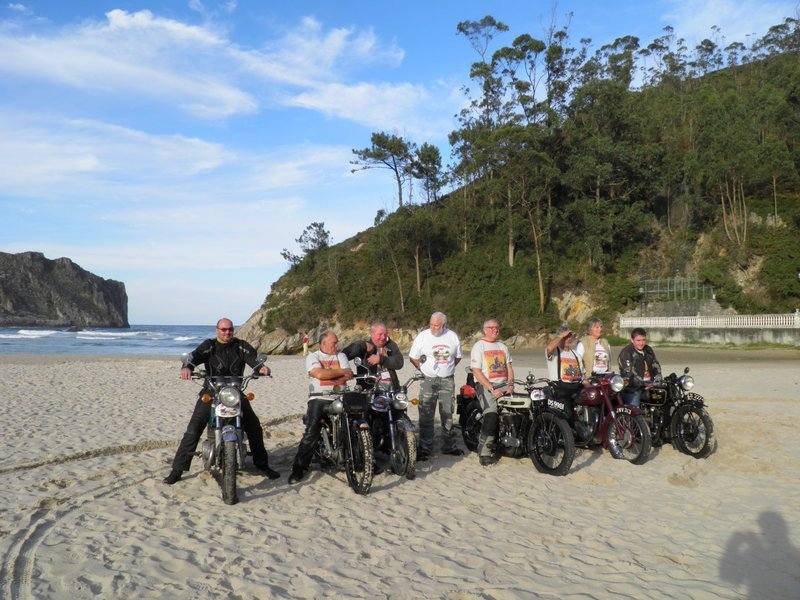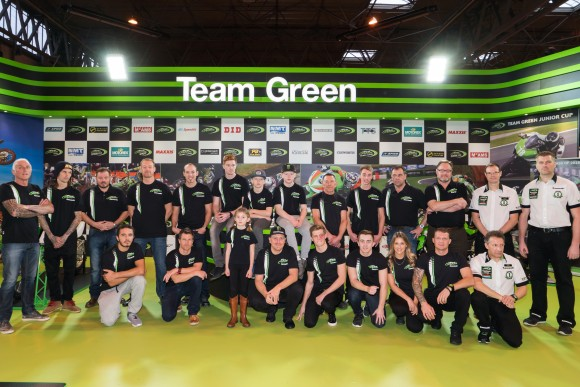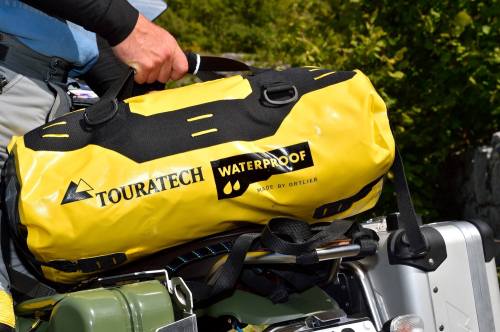Background
New motorcycle registrations have been growing steadily month-on-month throughout 2015. Devitt Insurance Services created the ‘Biking in Britain’ survey to find out the true state of the biking nation of the UK.
2,100 UK motorcyclists completed our State of the UK Biking Nation in 2015. Of those respondents, 91.52% were male and 8.48% were female.
The aim was to give an in depth analysis of the current biking generation covering everything from their demographic and lifestyle choices, their preferred style and type of motorbike, safety concerns and interests.
Who is your ‘average’ biker? 
From the ‘Biking in Britain’ survey, it was clear that the overall majority of UK motorcyclists are aged between 40 – 59 (63.38%) and one third of bikers are aged between 50-59 (33.83%).
Although many people would stereotype motorcycling as a young person’s sport, only 8% of UK motorcyclists are in their twenties.
Unsurprisingly, with the generation of bikers being more mature, 68.23% have children.
The most populated area of motorcyclists in the South East (19.05%) of the UK with 12% of bikers using their motorcycling for commuting purposes and 8% to avoid congestion.
82% of UK motorcyclists are riding ‘for fun’ and 76% for the love of motorbikes.
Lifestyle
With 40 – 59 year olds being the favourite to ride it’s unsurprising that 46.19% of motorcyclists have been riding a motorcycle for more than 20 years and 66.56% have an A class motorcycle license.
Other modes of transports popular with 87.41% of motorcyclists also use a car while 28.53% still can’t get enough of two-wheels and use a bicycle.
In answer to the question “Why do you ride a motorcycle?” The top response was for fun (82.67%), second came for the love of motorbikes (76.64%) while the third most popular response was for the thrill (51.89%). More mundane reasons for riding a motorbike such as for commuting (46.19%) or to avoid congestion (31.52%) or to save money (19.68%) came 4th, 5th and 6th respectively.
It is evident that motorcyclists ride for different reasons, for some it was keep the young “Biking keeps me feeling young. You have to ride one to understand.” Other it was all about freedom, “Freedom to go anywhere at any time, cheaply and quickly.”
Brand and Styles
The Japanese motorcycle manufacturers rule: Honda (26.56%), Suzuki (19.63%) and Yamaha (19.20%) are the favourite bike brands of approximately two thirds of the UK’s motorcyclists.
Keeping in the British theme, Triumph remains a leading UK motorcycle manufacturer brand with 15.31% unlike British brands, BSA and Royal Enfield with less than 1% of UK bikers owning one.
Female motorcyclists in the UK are more likely to be seen riding a Yamaha motorcycle compared to male motorcyclists who are more inclined to be cruising on a Honda.
Although the overriding favourite brand of all motorcyclists is Honda. Other popular brands for young riders (20 -39) is Suzuki compared to Kawasaki for 40 – 59 year olds.
Similarly, when asked what bike they would purchase if money was not object the response to this was hugely eclectic but the three brands that really stood out included Ducati, BMW and Honda.
The top three styles of motorcycles are sports (24.59%), naked (20.69%) and touring (21.07%).
Touring styled motorcycles are most popular with the 50 – 59 age group, this could be due to having more time for longer rides and trips on their motorcycles, therefore opting for comfort over speed.
Sports styled bikers were increasingly more popular with generations aged between 20 – 49 years-old.
Safety
Motorcycle safety is growing concern within the biking community as more and more organisations and companies are promoting ‘all the gear all the time’. It’s law to wear a motorcycle helmet when riding; however no other gear is compulsory.
94% of motorcyclists wear protective gloves, 91% protective boots and 70% wear protective trousers.
What was perhaps more surprising were the findings that only 25.01% wear full leathers while a meagre 33.39% of the same wear reflective gear.
Just over 20% of bikers use a sports pro camera when using their motorcycle. The main reason given by motorcyclists for using a camera is for using it as evidence in case they have an accident.
Additional training
69.33% of motorcyclists replied negatively to the question “Have you had any additional motorcycle training?” Of those that have taken additional motorcycle training the top three training organisations were Bike Safe (20.00%), IAM (9.65%) and the Enhanced Rider Scheme (7.41%).
The top response given for taking additional training was to ‘improve my riding skills’ (58.24%) while to ‘improve my safety’ was the main consideration for 34.45% of respondents.
To get insurance discounts accounted for only 12.64%, which suggests that some insurers may be missing a trick in not outlining the cost benefits of taking additional training more clearly.
Motorcycle Insurance and Road Issues
The response to the question ‘what’s your biggest consideration when buying bike insurance?’ was unequivocally met with the response “price” with 46.25% of respondents. 27.25% of motorcyclists said that the cover benefits played an important role in their ultimate purchasing decision while 15.22% said that the insurance company’s reputation informed their decision.
Like all groups in society, motorcyclists have their concerns and issues that they would like to see addressed and their main concern in 2015 is listed by 71.29% of bikers as “other road users”. Road conditions is cited by 62.87% of motorcyclists as cause for concern while keeping your bike well maintained (26.71%) and increases in theft (22.56%) were other top ranking worries.
Do bikers live up to their stereotypes?
The general consensus for motorcyclists is for them to be males covered in tattoos and have a beard. Devitt Insurance thought they would delve a little deeper to see if this was actually the case.
39.18% of motorcyclists have a tattoo. Tattoos were most popular with motorcyclists aged between 40 -49 with 36% of them being inked.
Less than a third of UK bikers have a beard, 27.30%.
Beards are most popular with male bikers aged between 50-59 years-old, with 151 respondents sporting facial hair.
Motorcyclist’s musical preference was rock with an overwhelming 75.28%. Many bikers confessed to being pop fans with 40.67% and nearly a third of motorcyclists (30.31%) said that classical music formed part of their music tastes.
If you have a beard and tattoos, you’re more likely to be seen riding a Harley Davidson or a custom styled motorcycle.
Biker Favourites
Nearly half of motorcyclists (47.33%) said they have never been to biker café. Of the more than half of motorcyclists that have gone to a café, the name that was mentioned the most was Ace Café with 21.40%.
Second and third places went to Squires (10.85%) and Ponderosa Café (9.26%).
The survey asked which do you think is the best motorcycle show in the UK? The MCN Motorcycle Show (40.29%) was considered by a significant number to be the best event while Motorcycle Live came second receiving 18.75% of the vote.
UK motorcyclists’ favourite motorcycle race to watch is Isle of Man TT (46.26%) followed in second place by the MotoGP (25.61%).
Who is your favourite biker personality?
Guy Martin was the clear winner with around 40% of votes with Valentino Rossi coming a not too distant second. Honourable mentions go to Carl Foggarty, Henry Cole, Barry Sheen and one respondent’s “dad.”
Technology and Innovation
The UK’s motorcyclists in the main don’t seem to think much of the latest smartphone App technology that is out there for them at the moment with many respondents saying they have no real opinion or don’t know what is on offer.
Of those that did have an opinion, many were of the view that nothing met their needs right now while other cited Sat Nav, Tom Tom and Real Rider as being their favourites.
Opinions on new technology such as electric motorbikes, however, was more positive with many UK motorcyclists giving the concept, at least, a cautious thumbs-up.
Social Media Platforms
The final question in the survey focussed on social media and which platforms were being used by the UK’s motorcyclists.
No surprised for guessing that Facebook came out on top with 78.83% of respondents; followed by Twitter with 30.73%.
Conclusion
The main points that can be drawn from the Biking in Britain survey justify that bikers can’t all be tarnished with the same brush.
Stereotypically speaking, less than half of bikers are bearded with tattoos which changes an age-old perception, although rock music will always be their favourite.
Motorcycling, as a nation, is maintaining a positive attitude and is growing steadily in terms of registrations, licence carriers and safety measures.
There is room for improvement in terms of the new technology available to bikers, advice for motorcycle insurance specialists and motorcycle manufacturers to help understand their target market further, in terms of styles of bikes they may release in the future.
The results of the survey have been able to give an in-depth synopsis of the biking nation as a whole in 2015. It has also given the ability to be narrowed down giving a more detailed description of key areas of the UK which can provide handy information to the relevant fields.








